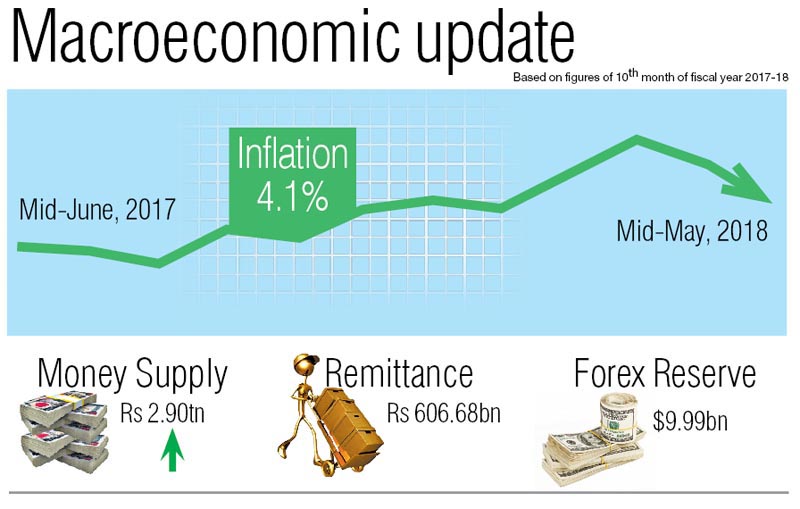Skyrocketing imports exert pressure on current account, forex reserves
Skyrocketing imports have exerted pressure on the current account and foreign exchange reserves as import growth went up by 21.9 per cent to Rs 985.83 billion against sluggish export growth of nine per cent to Rs 66.65 billion in the first 10 months of the current fiscal year, said the Macroeconomic Outlook of Nepal Rastra Bank unveiled today.
The country’s current account deficit further widened to Rs 191.02 billion in the review period from a deficit of Rs 7.57 billion in the same period of the previous year as the country’s import bills went up significantly compared to net transfers into the country, as per report. “As a result, the overall Balance of Payments turned into a deficit of Rs 18.93 billion in contrast to a surplus of Rs 53.81 billion in same period of previous year.”
Import of petroleum products and construction materials increased significantly in the review period. The country imported petroleum products worth Rs 131.94 billion, which is around 35 per cent growth compared to the previous fiscal. Likewise, the country imported cement worth Rs 23.88 billion in the review period compared to Rs 16.02 billion of the corresponding period of the previous fiscal. Similarly, import of MS Billet, steel sheets, bitumen, pipes and fittings and heavy construction equipment increased substantially.
“Import of capital goods will ultimately support in capital formation in the long term though we have to face a wide current account deficit in the short term,” said Nara Bahadur Thapa, executive director at the central bank.
Similarly, foreign currency reserves of the country have depleted to $9.99 billion in the 10th month of this fiscal compared to $10.49 billion in the beginning of this fiscal. The reserve position is sufficient to cover the import of goods and services for 9.6 months.
On a positive note, consumer price inflation moderated to 4.1 per cent compared to 5.3 per cent of the previous month. Consumer price inflation was six per cent while comparing year-on-year consumer price inflation. Likewise, appreciation of the dollar vis-à-vis Nepali currency increased the value of the inflow of remittances. Remittance growth was at seven per cent in review period to Rs 606.68 billion. Nepali currency has depreciated by 4.12 per cent in mid-May 2018 from the level of mid-May 2017.
Similarly, the flow of foreign direct investment (FDI) amounted to Rs 15.51 billion compared to Rs 1.61 billion in the corresponding period of the previous year.
Meanwhile, the Macroeconomic Outlook of the central bank has said that the country is in the path of achieving high growth as the Central Bureau of Statistics has already estimated 5.89 per cent growth rate for this fiscal. Similarly, the recent economic activities report released by the central bank shows a rise in the industrial capacity utilisation to 58 per cent during the six months of 2017-18 from 54.2 per cent a year ago. Likewise, construction, mining and quarrying as well as tourism are expected to maintain a growth momentum in 2017-18.
Though the next fiscal budget has envisaged to achieve high growth of eight per cent in fiscal 2018-19, the source of funds for financing could be insufficient as the financial sector has been facing credit crunch due to lack of deposit sources. As a result the year-on-year credit growth of 19.6 per cent continued to exceed the deposit growth of 16 per cent in mid-May 2018. The gap between credit and deposit is exerting pressure on lending rates. However, the weighted average deposit rate remained contained at 6.6 per cent in mid-May 2018, reflecting its anchoring role especially for lending rates, says the central bank outlook.






